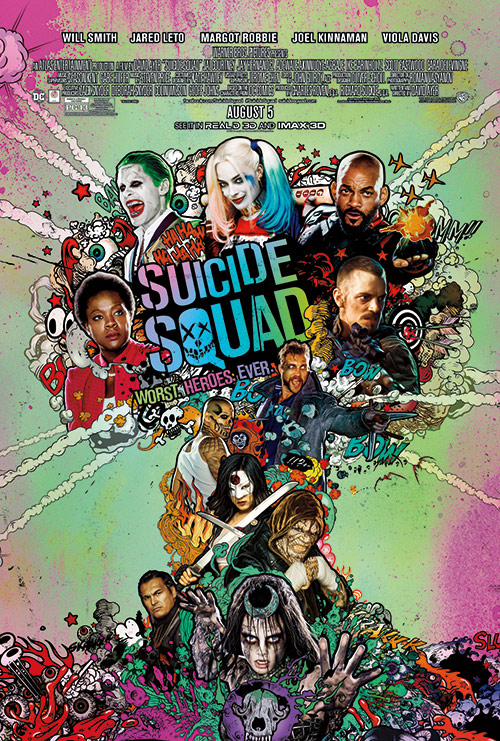 Origins: Top Secret
Origins: Top Secret
If asked to think of super-teams, it’s doubtful the Suicide Squad would come to mind. Originally conceived as a war comic along the lines of Sgt. Rockor The Losers, the team was also known as Taskforce X and appeared in the pages of DC comics’ The Brave and The Bold sometime around 1955. Running out of Roger-Sterling-inspired Mission Impossible stories, the editors would replace them with a team composed of their bestselling heroes in 1960. The result was the first appearance of The Justice League of America. Funny how, half a century later, the Taskforce X would once again precede the arrival of the Justice League (2017).
The Suicide Squad as presented in theaters has newer origins. This version was created by John Ostrander (watch for his name) in 1986 amidst a major overhaul of DC comics properties. During a time when comics were striving for “realism” and “relevance”, Suicide Squad acted as commentary on a post Iran-Contra Reagan administration. This covert team would be composed mostly of bad guys pressed into service by factions in the Military Industrial Complex who see a need for expendables to engage in black-ops. The comic proved popular, and the monthly series was published until 1992. While most fans will remember it either for its body-count or the redemption of obscure or damaged characters, less nerdy readers might have been amused with appearances by Ronald Reagan or Mikhail Gorbachev. Despite cancelation the concept proved resilient, and a team called the Suicide Squad has returned to the pages of DC comics at regular intervals since.
Straight Out of Gotham
It’s not news that Warner Bros. the movie studio has been desperate to capture some of the lightning MARVEL studios has been consistently bottling. While Marvel has worked wonders with their collection of heroes and antiheroes both on the big and small screens, DC is still in possession of the world’s most recognizable superheroes and villains. These characters are so iconic they can endure endless reinterpretation in any media.
Take, for instance, animation – while Tim Burton was helming Batman Returns (1992) Warner Bros. was also producing what would become the groundbreaking Batman: The Animated Series (1992-1995). The success of that animated series not only spawned a Superman cartoon as well as two kinds of Justice League series, it invented new characters that have since been folded back into the comics and out onto new platforms. Most notable of these characters is Harley Quinn.
Created to play an adoring sidekick to the Mark-Hamill-voiced Joker, this breakout character was quickly incorporated into Batman’s comic universe. Soon after, the character was appearing in videogames and other merchandise. Following the success of The Dark Knight (2008), the immensely popular videogame Batman: Arkham Asylum (2009) re-designed the character to appear less like a traditional harlequin and more like a juggalo fetish doll. These changes stuck and casting Harley with the up-and-coming blonde bombshell Margot Robbie has ensured the Suicide Squad’s success. Robbie steals every scene she is in with a schizophrenic glee. Her character is the most developed of all of the squad.
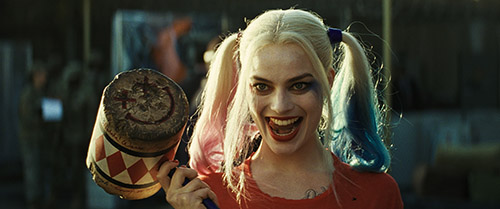
Robbie just went head-to-head against the one and only Jackie Chan, but on a world stage that excluded America. Two weeks prior to the Suicide Squad, The Legend of Tarzan opened starring Robbie as the Ape Man’s iconic love interest, Jane. Variety initially reported that Tarzan topped the foreign box office, taking in $44.7 million. Jackie Chan’s latest action comedy buddy-flick Skiptrace, costarring Johnny Knoxville, opened the same weekend and earned $44 million. Later, Deadline: Hollywood claimed that Skiptrace earned $62 million over opening weekend in the Chinese box office alone. That would be Jackie’s best opening ever in a career that has spanned well over a hundred films. It was also the biggest take so far for China for a live-action film. These growing numbers are the result of the ever-expanding movie market in China, which grows by twenty-one new theater houses per day. At this rate, it will overtake the number of theaters in America sometime early next year. The Legend of Tarzan only earned $23 million in China over that same weekend. Nevertheless, Ms. Robbie is a rising starlet with proven chemistry with Suicide Squad’s other major actor Will Smith; both of whom stared as romantically-entangled grifters in Focus (2015).
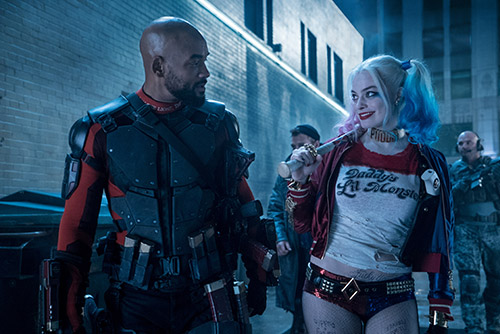
Will Smith has been wanting to be a superhero for ages. Throughout this twenty years as a leading man, he’s saved us from Aliens, Robots, Vampires and ennui; he could have been a great Green Lantern. Instead, he plays hitman/loving-father Deadshot. One of Batman’s more obscure foes, he's basically a marksman who never misses, except when he wants to. The movie continues filling its roster with Batman characters, including a swaggering Killer Croc and another 80’s era character pulled from another Batman comics spin-off, Katana. Katana is played by standout newcomer Karen Fukuhara. Given her namesake, Katana is the most martial member of the Suicide Squad. Fukuhara has a background in Karate and more importantly for this character, Kendo. Nevertheless, Fukuhara also has a stunt double, Ming Qiu, a Jianxu Wushu Team alumni who performed for Team Paul Mitchell in the North American Sport Karate Association (NASKA) for 5 years. She worked on Kill Bill: Vol. 1 (2003), Charlie’s Angels: Full Throttle (2003), Ultraviolet (2006), Sucker Punch (2011), G.I.Joe: Retaliation (2013), and dozens more. Sadly, Katana's fight choreography feels neither Japanese or Chinese to a martial aficionado. It's the typical spin-and-slash sword style prevalent in films with minimal martial underpinning, a waste of talent by the filmmakers.
While Katana’a swordplay provides a bit of novelty in a movie filled with an overabundance of gunfire, of the two violent femmes, Harley Quinn receives the majority of the spotlight, often shining directly on her digitally enhanced hot-pants. The movie is mostly an origin story for her, though most characters receive entertaining origin sequences with title cards and relevant stats included. It’s in those self-aware asides where the movie is the most entertaining, trying its hardest to be more like Deadpool (2016) than Batman V Superman: Dawn of Justice (2016).
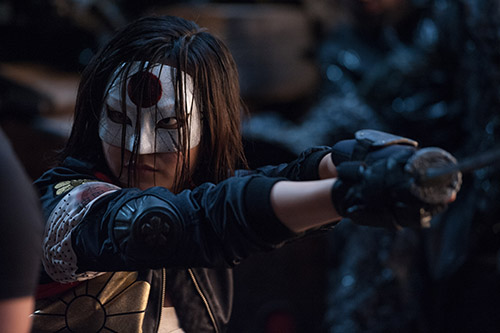
Why Batman No Longer Throws Batarangs
Those Deadpool references are most prevalent in Captain Boomerang, a 60’s era Flash rogue, updated and played by Jai Courtney. At the premiere of another of his films, The Divergent Series: Insurgent (2015) he boasted that “I’ve been training for three months in different martial arts”. Such braggadocio may win over the uninitiated, but only raises a skeptical eyebrow from fans of the martial movie genre. Three months isn’t even enough to learn the basics. Whatever his background, his stunt double was Alain Moussi, who has done stunt work in Immortals (2011), Mirror Mirror (2012), Pacific Rim (2013), Brick Mansions (2014) and many more. Captain Boomerang would have been better served by actor and genuine martial artist Ray Park; Courtney's portrayal feels highly derivative of Park's Toad character from X-Men (2000) mashed up with his Edgar character from Heroes (2009).
Unfortunately, martial skills see little use, as the movie collides with the genre trope that has quickly become a problem for super-team movies; the faceless horde. Both The Avengers and Thor: The Dark World quickly wore out any interest in movie heroes facing such armies, and in Suicide Squad those hordes truly are faceless. Bits of trypophobia-inducing design coupled with Mesoamerican motifs are ultimately lost in the murky lighting much too similar to Batman V Superman. There is some redemption in Jared Leto’s Joker, who lights up his scenes with a contrasting gold-plated belligerence, perfectly timed for this year’s election season.
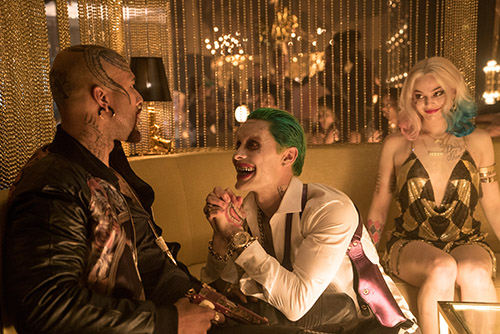
The fight coordinator for Suicide Squad was none other than Richard Norton, a well-known face among fans of the martial genre. He worked with Chuck Norris in The Octagon (1980), and Jackie and Sammo in My Lucky Stars 2: Twinkle Twinkle Lucky Stars (1985) and Shanghai Express. What’s more, he was in that classic cult favorite Gymkata (1985) where gymnastic legend Kurt Thomas tried to ply his skills in one of the wackiest martial arts flicks ever. He also used a table saw blade as a Shuriken in Force Five (1981) a movie which could easily have been a source of inspiration. Standing at an intimidating 6’ 2”, Norton was a Karate Black Belt who became a bodyguard for rock stars like Mick Jagger, David Bowie and Fleetwood Mac, until Norris recruited him to help with the Ninja action of The Octagon. Given his stature, the bulk of his five dozen acting credits are for playing bad guys. He’s the perfect choice to choreograph the villains of Suicide Squad. It's a bit of a stretch when a villain who can destroy battleships that are miles away with thunderbolts decides to take on the heroes mano a mano, but at least it keeps martial arts stuntpeople employed.
Despite writer/director David Ayer’s great a love for guns, Suicide Squad is surprisingly bloodless and too beholden to the videogame structure. Even more egregious, it builds up to another one of those CGI MacGuffins, this one ripped straight out of that terrible Fantastic Four (2015) movie. It even goes so far as to use the power of “teamwork” to save the day, at least Suicide Squad has a more interesting Human Torch. Ayer has written some striking films such as The Fast and the Furious (2001) and Training Day (2001) and directed some brutal shoot-em-ups End of Watch (2012) and Fury (2014), yet given a movie where heavy casualties are a key concept, too many of these obscure characters make it to the movie’s end. As a stealth Batman spin-off, it wets the appetite for the recently-announced Untitled Harley Quinn Project and demands you return for the next bat-episode, due in theaters next summer.
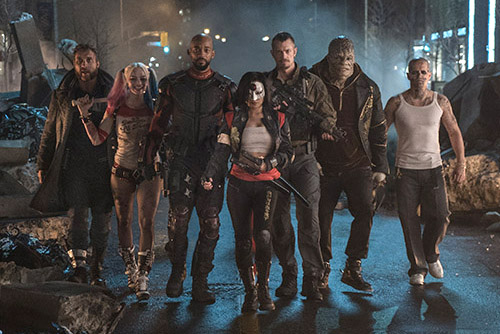
About
Patrick Lugo with Gene Ching :
![]() Patrick Lugo is Senior Designer at Kung Fu Tai Chi Magazine and has done design work for martial art books as well as illustrations. Most notably, he illustrated the award winning Little Monk & the Mantis. More artwork and comics can be found at PLUGOarts.com or at select art galleries in the San Francisco Bay area.
Patrick Lugo is Senior Designer at Kung Fu Tai Chi Magazine and has done design work for martial art books as well as illustrations. Most notably, he illustrated the award winning Little Monk & the Mantis. More artwork and comics can be found at PLUGOarts.com or at select art galleries in the San Francisco Bay area.
![]() Print Friendly Version of This Article
Print Friendly Version of This Article
















